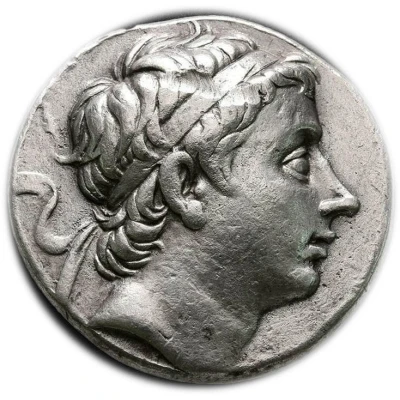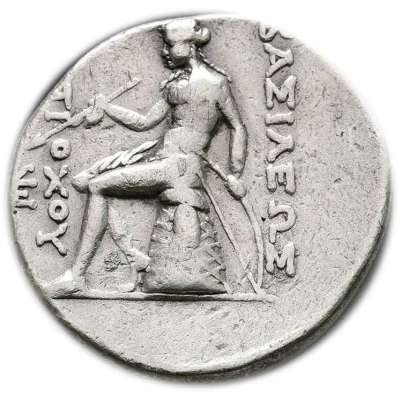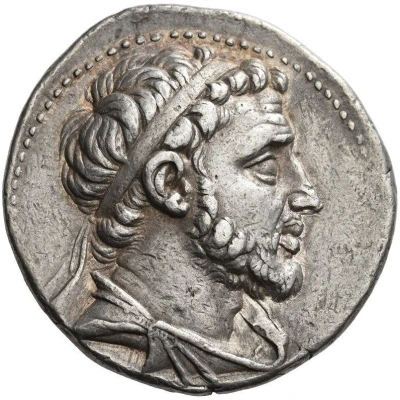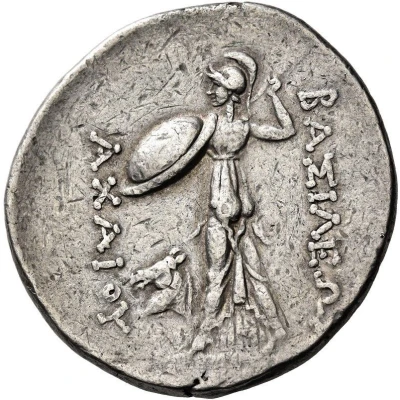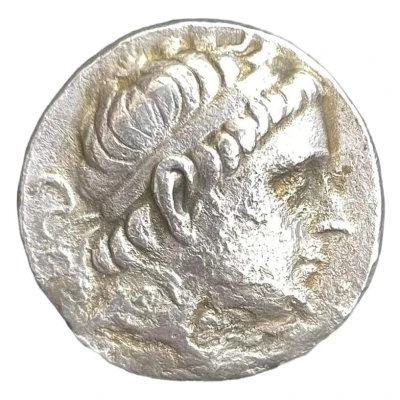
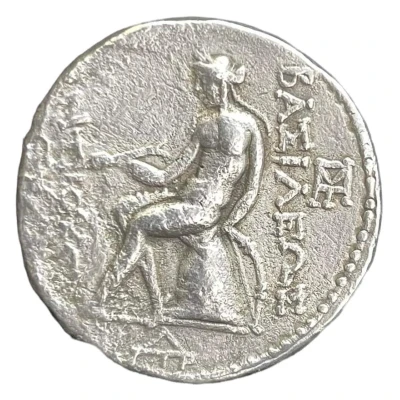

© PA-Engineer (CC0)
Tetradrachm - Antiochus III 220 BC - 210 BC
| Silver | 15.6 g | 26 mm |
| Issuer | Seleucid Empire (Seleucid Empire (305 BC - 64 BC)) |
|---|---|
| King | Antiochos III Megas (223 BC - 187 BC) |
| Type | Standard circulation coin |
| Years | 220 BC - 210 BC |
| Value | Tetradrachm (4) |
| Currency | Drachm |
| Composition | Silver |
| Weight | 15.6 g |
| Diameter | 26 mm |
| Thickness | 3 mm |
| Shape | Round (irregular) |
| Technique | Hammered |
| Orientation | Variable alignment ↺ |
| Demonetized | Yes |
| Updated | 2024-10-10 |
| Numista | N#327548 |
|---|---|
| Rarity index | 97% |
Reverse
Apollo seated left on omphalos, holding arrow in right hand and resting left hand on his bow; a monogram in left field, a monogram in right field, and a monogram in exergue.
Script: Greek
Lettering: ΒΑΣΙΛΕΩΣ ΑΝΤΙ ΟΧΟΥ
Translation: King Antiochus
Comment
Types 1161 and 1162 are differentiated by head type, while sub-types are differentiated according to monograms variations.The omphalos (literally navel) is a cone-shaped stone, placed at the Temple of Apollo at Delphi that was considered by the Ancient Greeks to be the center of the world.
Interesting fact
One interesting fact about the Tetradrachm coin of Antiochus III from the Seleucid Empire is that it features the king's portrait with a distinctive elephant's head on the obverse side, which symbolizes the king's military prowess and power.
